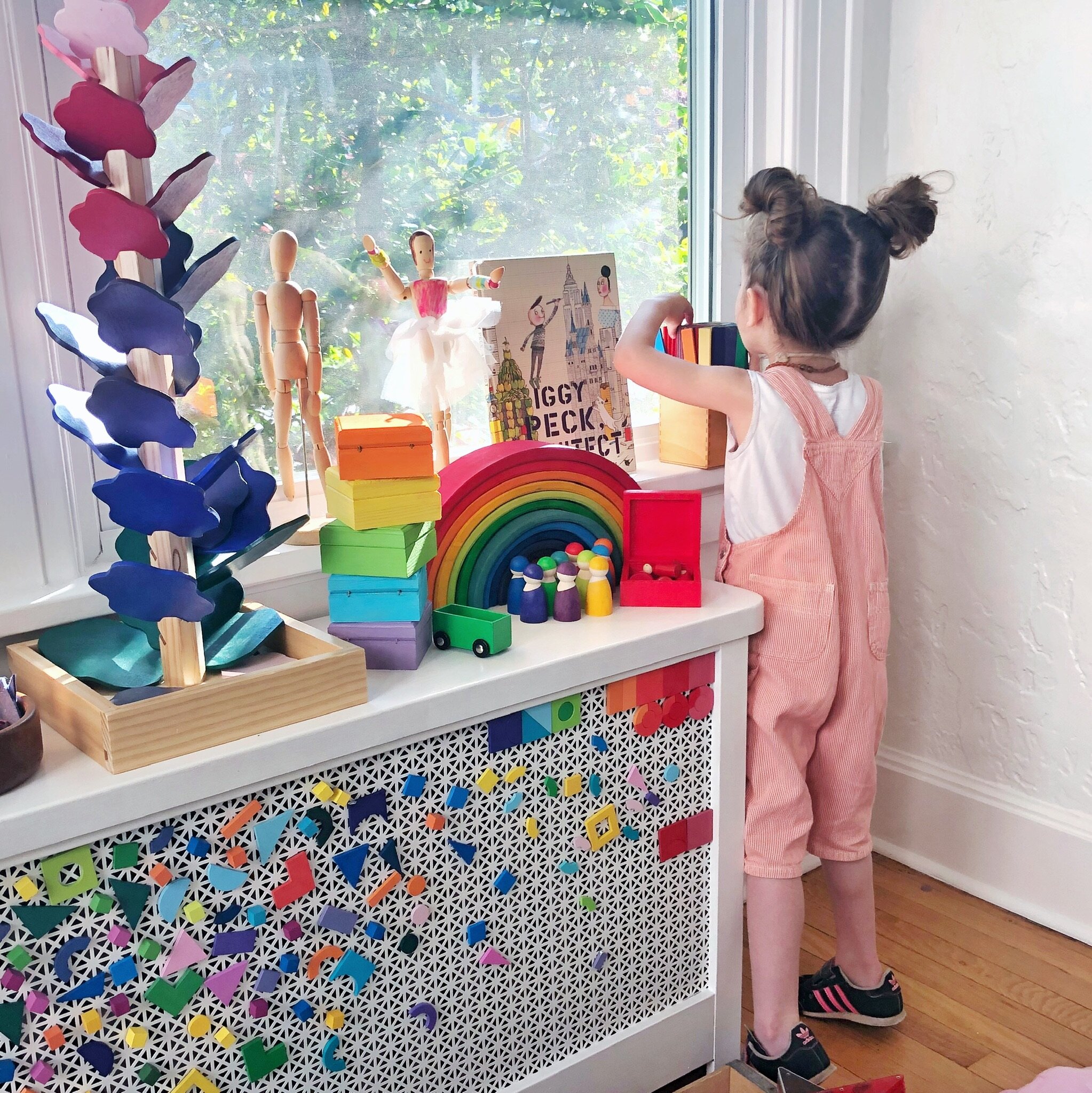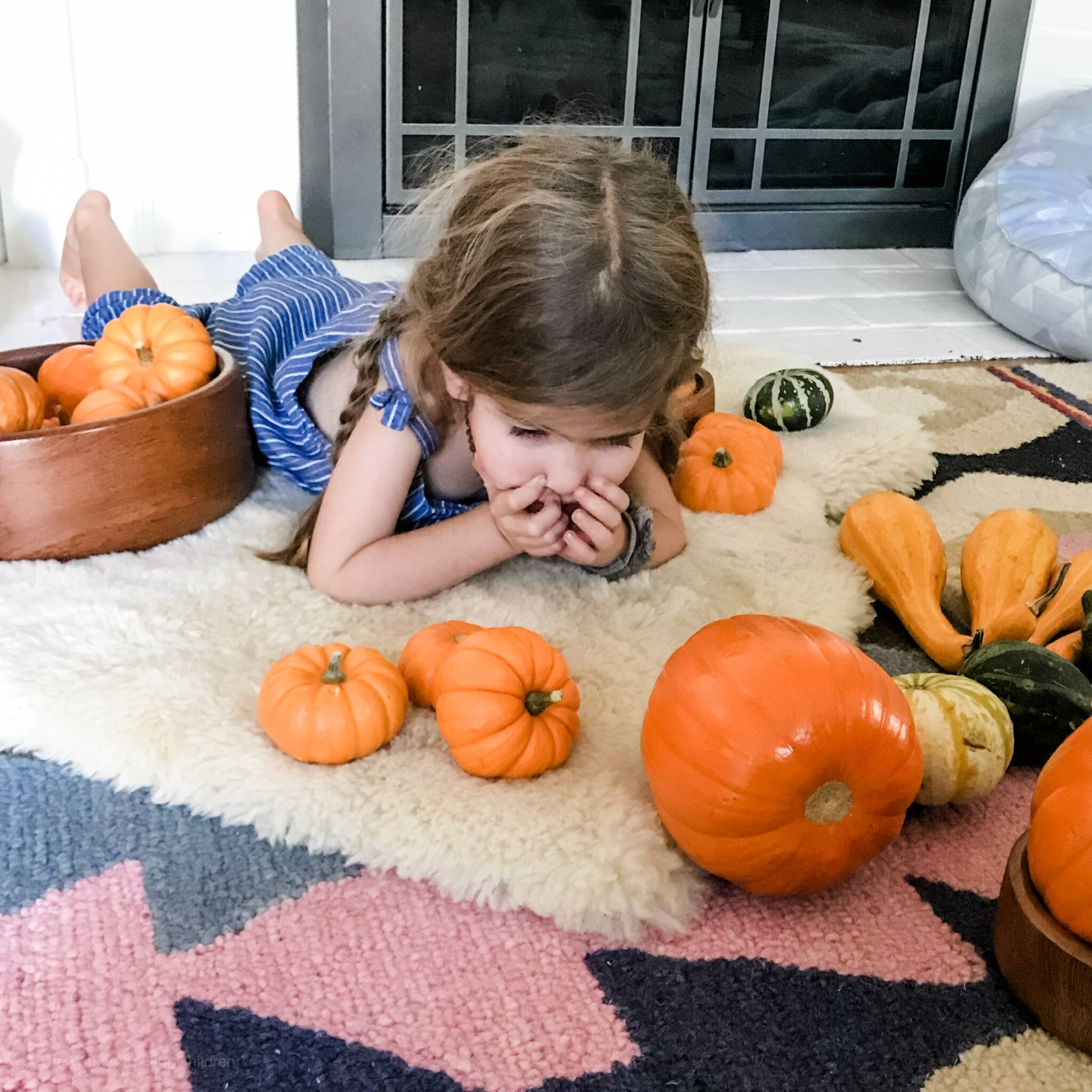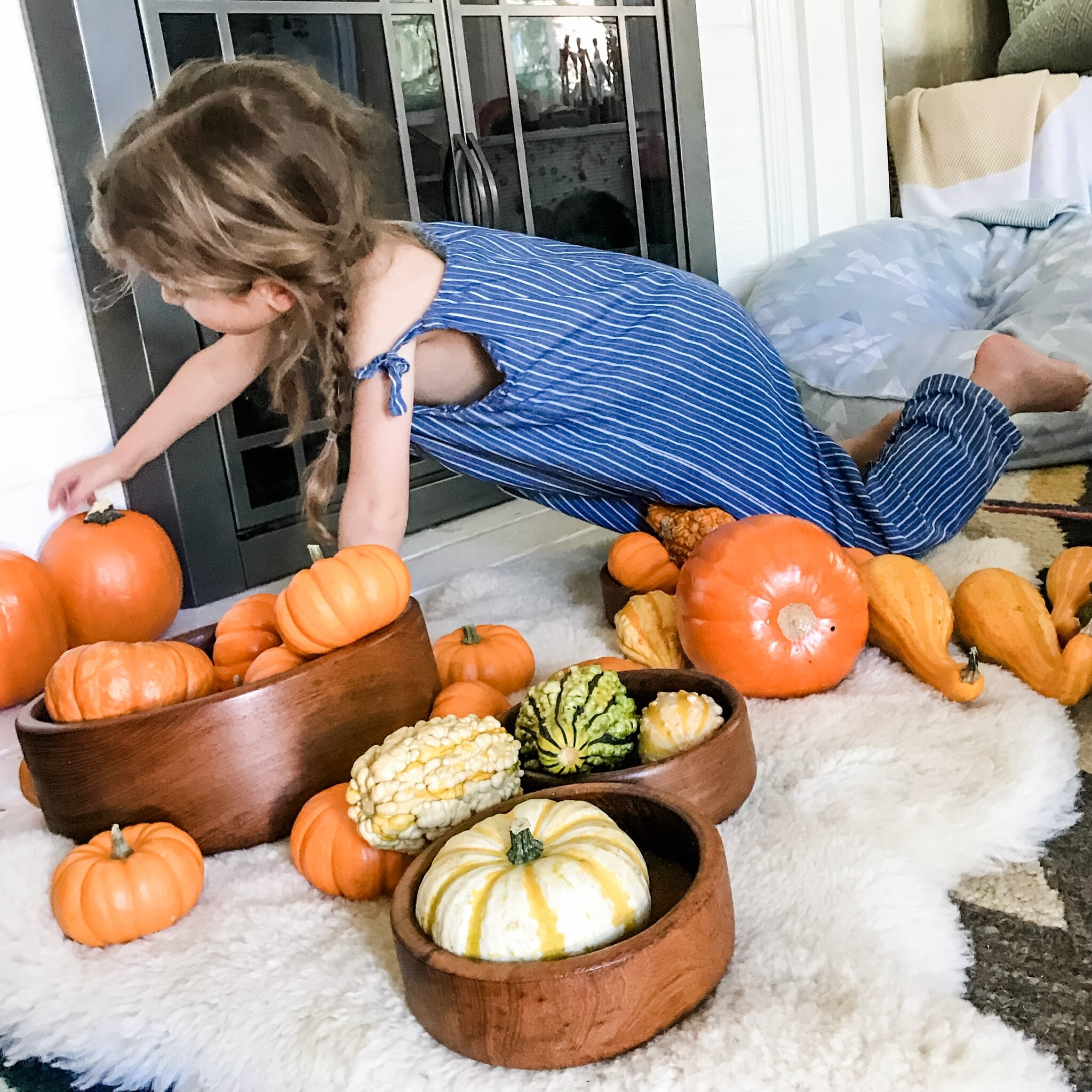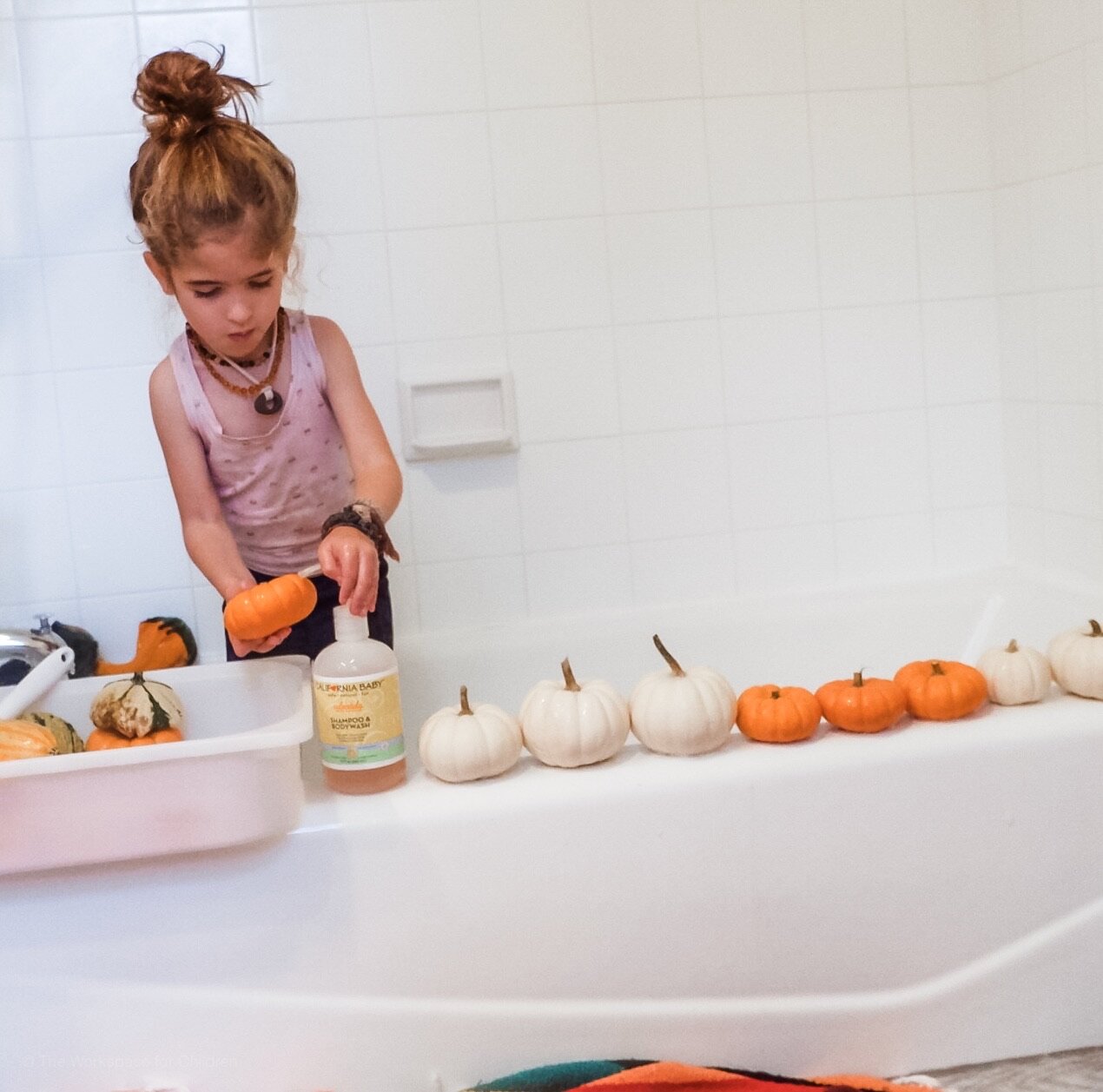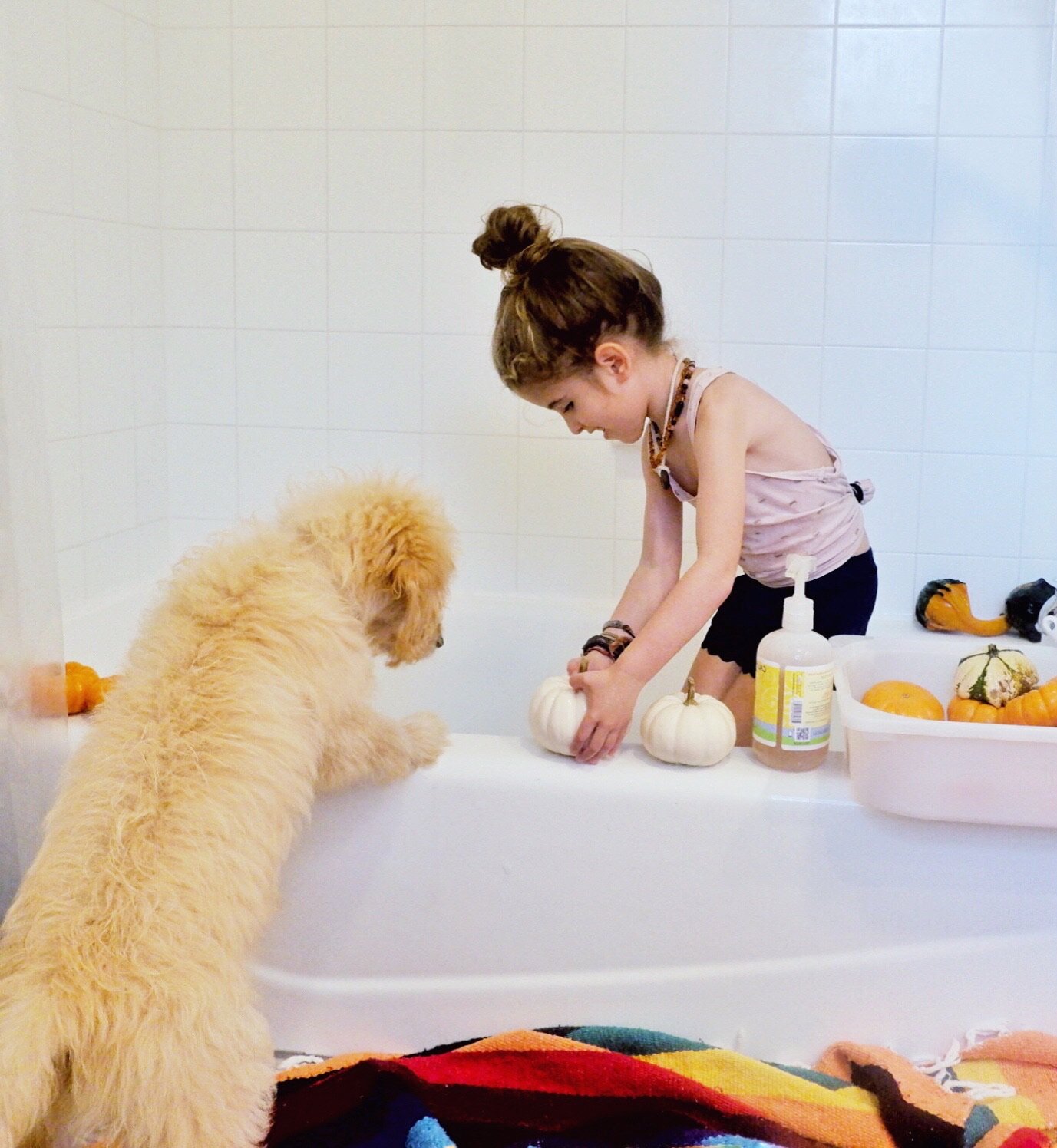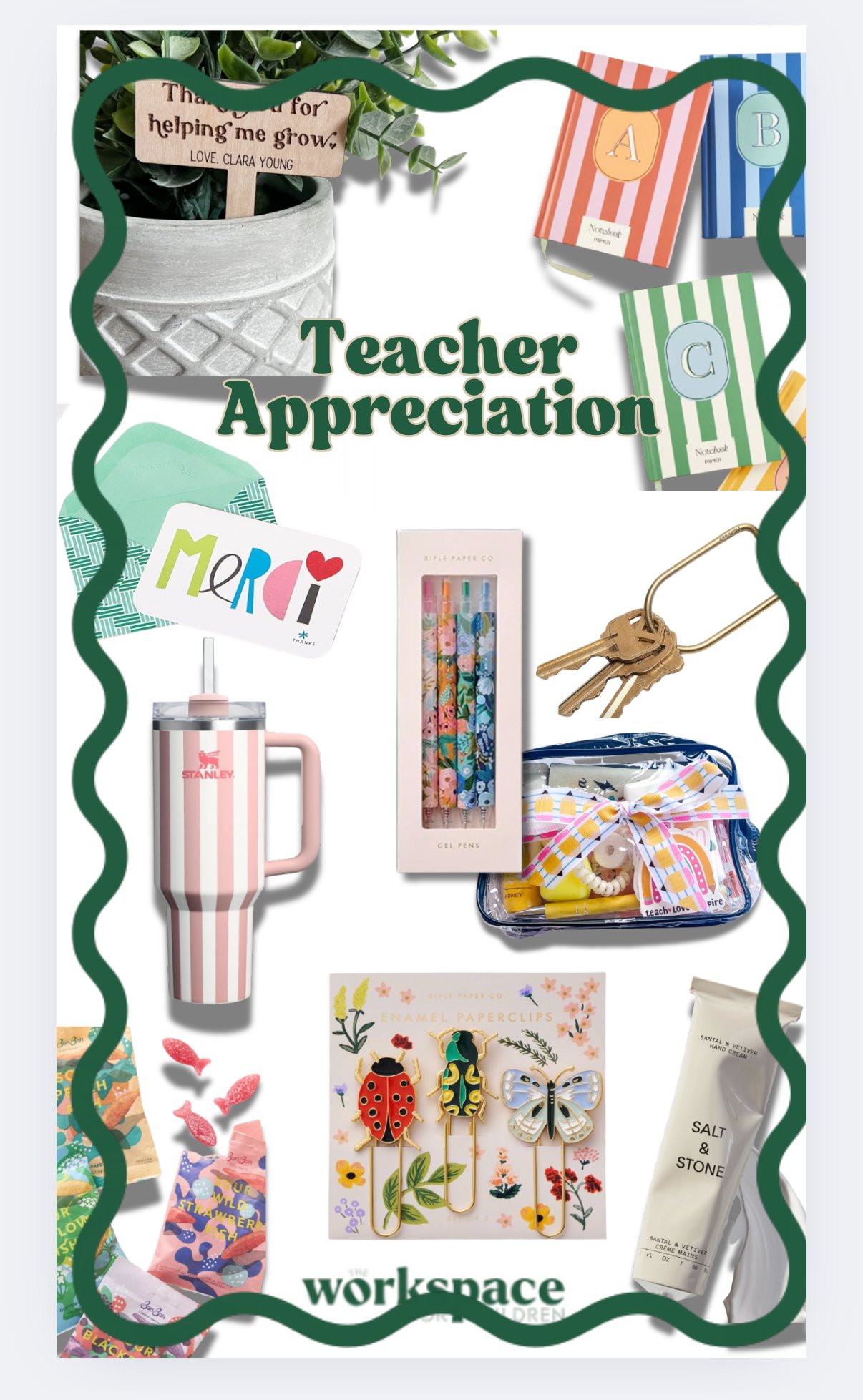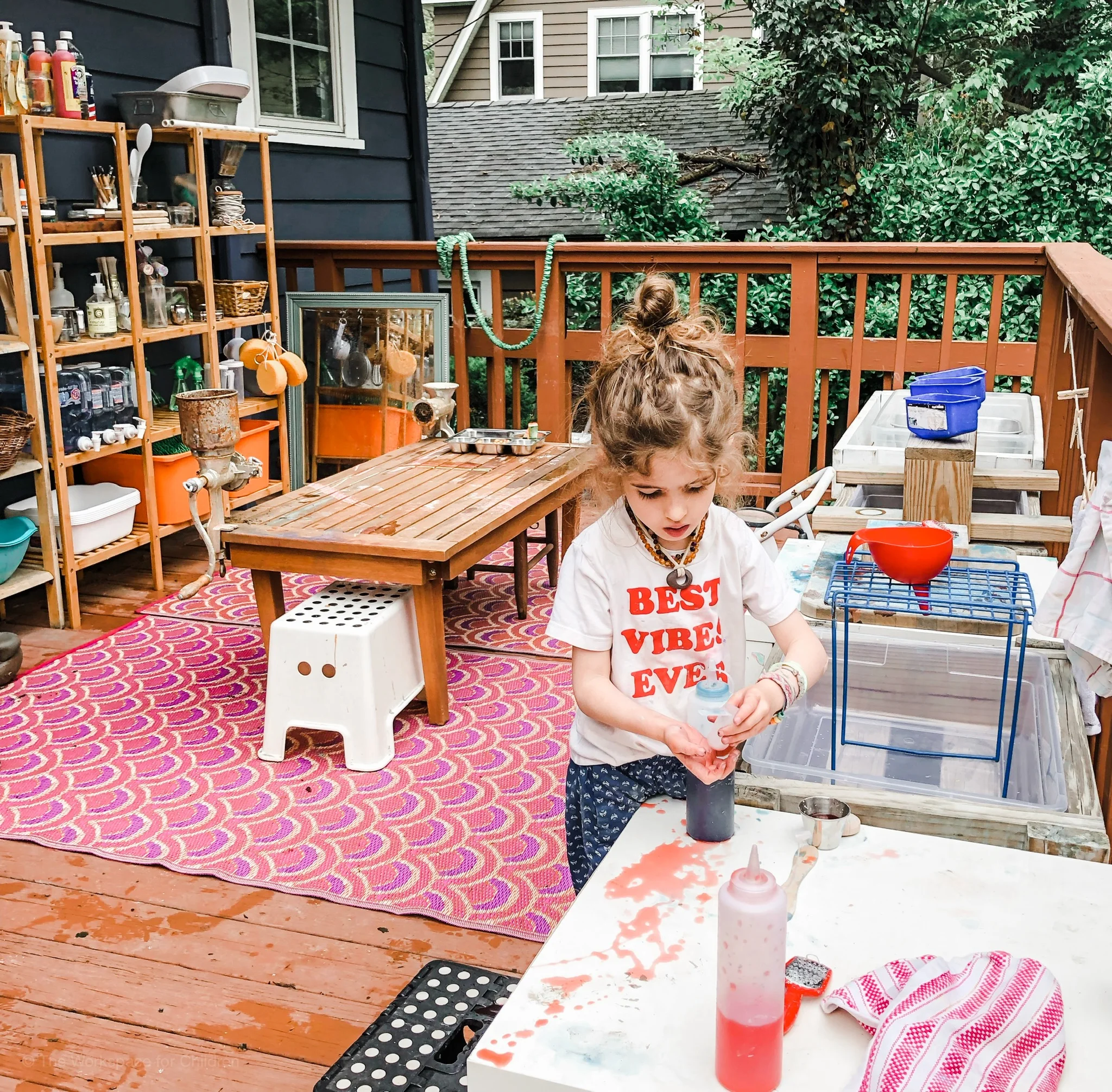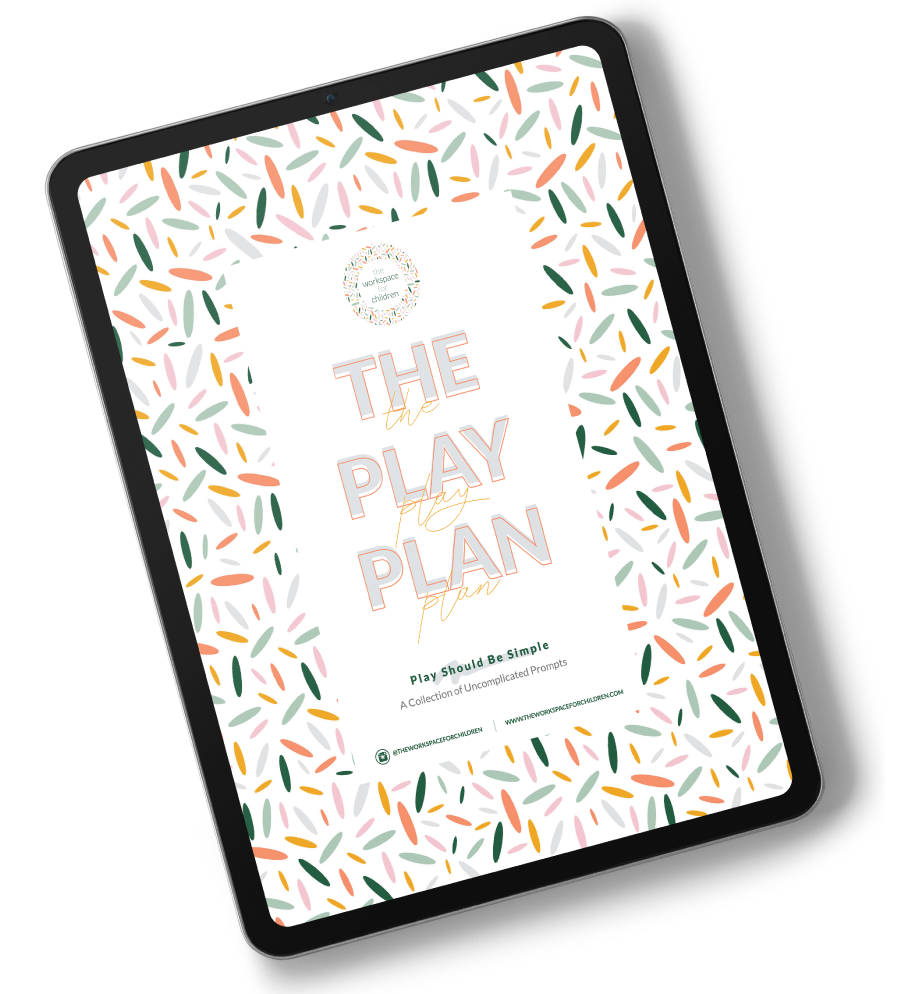Pumpkin Play for Babies, Toddlers, and Preschoolers
/Simple Pumpkin Play Ideas for Babies, Toddlers and Preschoolers
ACTIVITY ONE: LOOSE PARTS PUMPKINS
All you need are some mini pumpkins and gourds. Hit up your local farm stand or Trader Joe’s for some minis. Pumpkins offer so much LEARNING when you twist your thinking a bit.
Here’s what you are going to do:
FOR YOUR BABY
Wash your pumpkin very well so that your baby is safe to put the pumpkins in their mouth. Babies learn so much from putting things in their mouths and as long as you give these mini pumpkins a good wash and make sure the stems are not loose, you are good to go.
Line up two or three mini pumpkins in front of your little one. You can do this on the high chair tray, during tummy time, or just on the floor in front of them. Allow your baby to observe. They might pick them up and throw them down (gravity and object permanence!), or they might taste them, and feel the smooth or bumpy skin on her tongue or along her fingers. Maybe they’ll transfer the pumpkins from hand to hand.
Follow your baby’s lead, and trust that they are learning and playing.
TODDLER
Your toddler might start to line up the pumpkins, sort them by shape or color, or even stack them and watch them topple over. You could try adding in some bowls or containers so that they can transfer the pumpkin and dump them out/ put them back. As you observe your child at play, you can start to pepper the following language where appropriate: Smooth, Bumpy, Heavy, Light, Orange, Yellow, Green, Pumpkin, and Gourd. However, try not to dictate their play with these words. Rather, interject them casually and authentically. If they are going in another direction? Follow them there.
FOR YOUR PRESCHOOLER OR KINDERGARTENER:
Your preschooler might begin to group the pumpkins and make more in-depth observations. Take out a pencil and a paper and write down their questions and observations. Encourage your child to draw and use inventive spelling to record their own observations. Reflect their questions and observations back to them and hypothesize. Make a plan to figure out the facts.
ACTIVITY TWO: JUST ADD WATER
For the second activity, you will need:
A bucket of water (or even the bathtub!)
A soft scrub brush, toothbrush, or sponge
Set up a big drop cloth and lay out your mini pumpkins and scrubbers. Grab an under the bed bin and dump in a few inches of water. A little bit goes a long way. Add child and you are done! Need more details? Read on…..
FOR YOUR BABY:
An independently sitting baby would love to splash and drop pumpkins in and out of the water. For the very young ones, I wouldn’t add soap or tools. Just water and two or three mini pumpkins are more than enough. Plop your little baby in the tub with a few pumpkins. Of course, please supervise your baby carefully.
FOR YOUR TODDLER AND PRESCHOOLER:
A toddler and preschooler will LOVE scrubbing the pumpkins and giving them a bath. I save old soap and shampoo containers and add just a drop or two of baby shampoo and fill it the rest of the way with water. You could set your toddler up at the water table, in the bathtub or on a drop cloth as suggested above.
The key is letting your child get in the zone. Try hard not to interfere. Water can be mopped up easily. Allow your child to engage in the sensory learning and child-led play that is sure to happen.
ACTIVITY NUMBER THREE: LET’S GET MUDDY
Get outside on a fall day and plop some dirt and water in a big old tub. If it has been raining, you can even set you preschooler up near a muddy puddle. They’ll love it! Give them those same pumpkins, gourds, and some buckets and a shovel. They will know exactly what to do.
There you have it, my friends. Three simple pumpkin activities to do this fall with your baby, toddler and preschooler. For more fun projects like this one, join The Workspace for Children community on Instagram! Let’s parent together.
SUBSCRIBE TO THE NEWSLETTER!
WANT TO SEE MORE BLOGS LIKE THIS ONE? GREAT! CHECK OUT THE POSTS BELOW!
CHECK OUT OUR EBOOKS!
THE PLAY PLAN
The Play Plan is an ebook containing play invitations that are easy to set up, inexpensive, and apply children of all ages. The 25 play prompts are divided into five categories and use items that you most likely already have at home. These play prompts consider children of all ages, all developmental stages, and all learning capabilities. Each prompt can be tailored to fit your unique child’s needs. Play is meant to be simple.
QUIET TIME AND INDEPENDENT PLAY EBOOK
This downloadable ebook is your personal guide to Quiet Time and Independent Play. This ebook will teach you the basic steps to implementing a Quiet Time and Independent Play strategy that works. The guide teaches you my proven 5 step method for implementing a daily break without using screens. (Guide includes 5 bonus invitations to play.)

